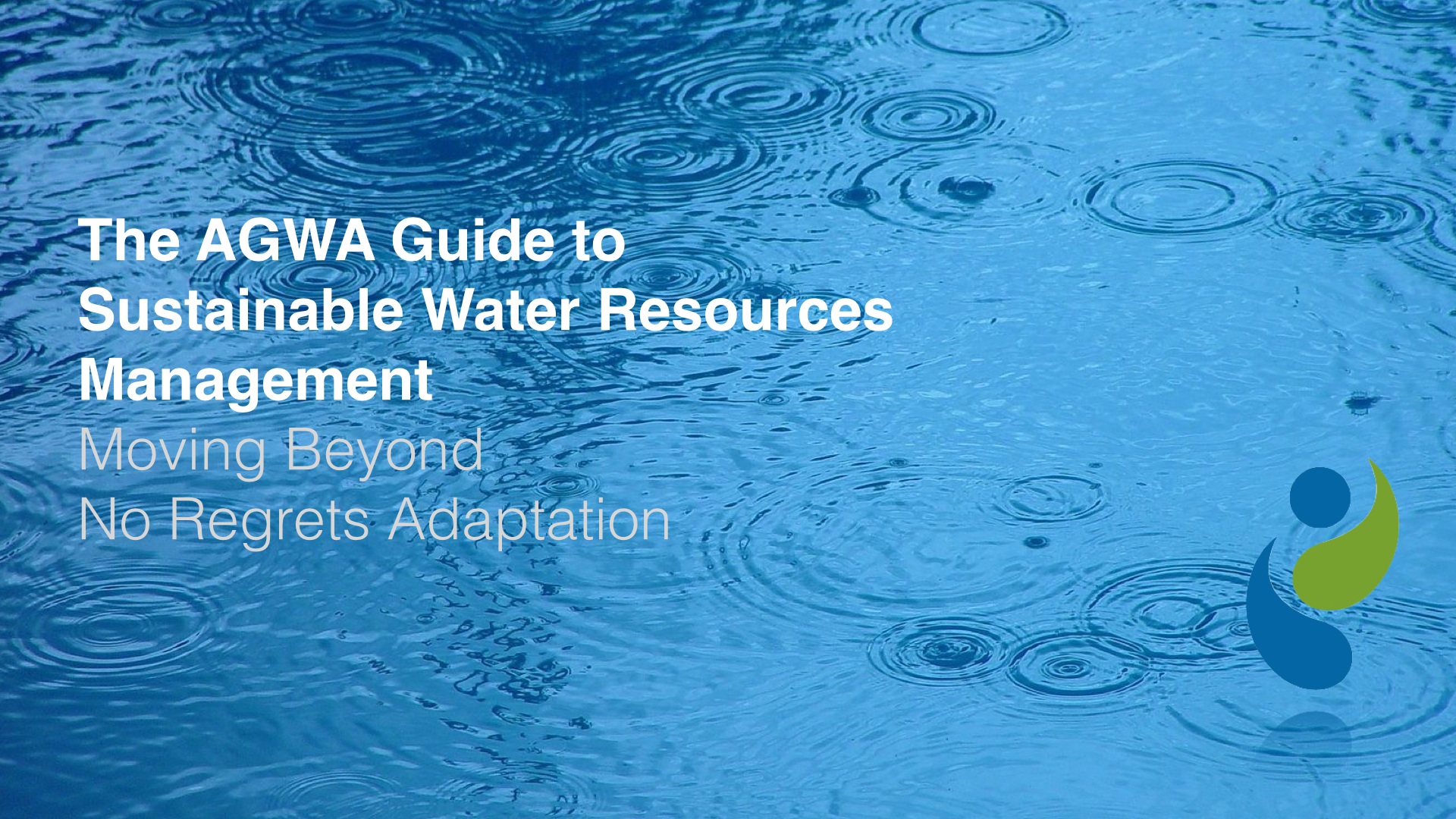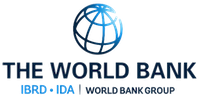What is the AGWA Guide?
The AGWA Guide is meant to serve as a resource for individuals and institutions who are interested in learning about how to mainstream climate adaptation into water resources management. We believe this builds explicitly on our previous AGWA publication Beyond Downscaling: A Bottom-Up Approach to Climate Adaptation for Water Resources Management. However, Beyond Downscaling is a synthetic overview of bottom-up approaches to climate adaptation and risk assessment in particular, while the AGWA Guide is intended to serve as more of a self-exploration guide to the broader literature. The AGWA Guide should provide more detailed descriptions of current thinking and implementation on these approaches.
1
How do we analyze vulnerability in a way to sustain stakeholder-driven implementation?
In this video, Dr. Eugene Stakhiv (US Army Corps of Engineers, retired), explores the History of Climatic Changes.
We know that in the past, water level in the Great Lakes changed dramatically +/-10 meters. So how did this happen before CO2? Why do ice ages occur? Why has the Gulf Stream collapsed? These, and other questions are addressed by Dr. Stakhiv.
1.1. Adapting to Existing (and Evolving) Climate Variability.
Climate variability refers to the severity and frequency of droughts, floods, and other extreme events, as well as the amount of seasonal variation. Climate variability is itself shifting globally now in response to climate change, so we must both adjust to existing climate variability as well as future changes in variability.
Large climate “engines” such as ENSO (the El Niño Southern Oscillation), the North Atlantic Oscillation, and the Pacific Decadal Oscillation are themselves changing, which alters other aspects of climate variability. Unfortunately, our projections for future trends are often very limited and incomplete, which makes planning, resource management, development strategy, and infrastructure design/operations more challenging, especially in the developing world.
•Valdez, Juan, Kenneth Strzepek, and Guillermo Mendoza. “Climate Variability and Extremes.” Theme discussions. Recorded 2013. Washington DC: The World Bank. [video]
•Droogers, Peter (FutureWater). “Evapotransporation.” Theme discussions. Recorded 2009. Washington DC: The World Bank. [video]
•Meade, Robert (US Geological Survey). “Evolution of Sediment Studies.” Theme discussions. Recorded 2009. Washington DC: The World Bank. [video]
•Richey, Jeffrey E. (University of Washington). “Considering Land-Ocean Interactions in Hydrological Work.” Theme discussions. Recorded 2009. Washington DC: The World Bank. [video]
•Strzepek, Kenneth M. (University of Colorado at Boulder). “Non-Stationary Hydrology.” Theme discussions. Recorded 2009. Washington DC: The World Bank. [video]
•Strzepek, Kenneth M. (University of Colorado at Boulder). “Timetable for Effects of Climate Change in Hydrology.” Theme discussions. Recorded 2009. Washington DC: The World Bank. [video]
•Valdes, Juan B. (University of Arizona). “Major Implications of Climate Variability and Change in Planning, Design, and Management of Water Resources Systems.” Theme discussions. Recorded 2009. Washington DC: The World Bank. [video]
1.2. The Limits of Knowledge: Transitioning from Uncertainty to Confidence.
Climate change presents new kinds of problems, especially for audiences who need quantitative data about water conditions decades from now —particularly data that is both precise and accurate. Our ability to “project” future conditions has been framed primarily by climate science and climate models. Unfortunately, these models were not designed for water managers, nor were they designed for climate adaptation purposes. When uncertainties from climate models are connected to economic, institutional, demographic, and urbanization trends, the “envelope of uncertainty” increases rapidly. How do we think pragmatically about uncertainty and climate change, and can we shift from focusing on uncertainties to building confidence in what we do know, in order to make more robust, resilient decisions?
•Mendoza, Guillermo (US Army Corps of Engineers). “Using uncertainty & confidence to guide choice of decision making approach.” Theme discussions. Recorded 2013. Washington DC: The World Bank. [video]
•Mendoza, Guillermo (US Army Corps of Engineers). “Summary of the AGWA Approach.” Theme discussions. Recorded 2013. Washington DC: The World Bank. [video]
•Mendoza, Guillermo (US Army Corps of Engineers) and Gilroy, Kristin (US Army Corps of Engineers). “Comprehensive Overview of AGWA Approach.” Theme discussions. Recorded 2013. Washington DC: The World Bank. [Extended two-part video]. https://vimeo.com/117536216 and https://vimeo.com/117535959.
•AGWA. 2013. “Caveat Adaptor.” White Paper 1. Washington, DC: Alliance for Global Water Adaptation.
•Wilby, Robert (Loughborough University). “Climate Uncertainty.” Workshop: Including climate change in hydrological design. Recorded 2011. Washington DC: The World Bank. [video]. Extended version available at https://vimeo.com/118300350.
In this video, Julian Doczi (Water Policy Program, ODI), addresses some interesting questions.
•What is a climate adaptation tool?
•What is the emphasis of adaptation?
•What are the different types of tools and how do we select and use them?
•Workshop. “Including Climate Change in Hydrologic Design.” Recorded 2011. Washington DC: The World Bank. [Full video of workshop].
•Kundzewicz, Zbigniew W, and Eugene Z Stakhiv. “Are Climate Models ‘Ready for Prime Time’ in Water Resources Management Applications, or Is More Research Needed?” Hydrological Sciences Journal, 55, no. 7 (2010): 1085–1089. doi: 10.1080/02626667.2010.513211.
•Wilby, RL, and S Dessai. “Robust Adaptation to Climate Change.” Weather, 65, no. 7 (2010): 180–185.
•Wilby, R L, J Troni, Y Biot, L Tedd, B C Hewitson, D M Smith, and R T Sutton. “A Review of Climate Risk Information for Adaptation and Development Planning.” International Journal of Climatology, 29, no. 9 (2009): 1193–1215. doi:10.1002/joc.1839.
•Droogers, Peter (FutureWater). “Reliability of Remote Sensing Data and Simulation Modeling.” Theme discussions. Recorded 2009. Washington DC: The World Bank. [video]
•Rodriguez-Iturbe, Ignacio (Princeton University). “Gaps Between Research and its Application.” Theme discussions. Recorded 2009. Washington DC: The World Bank. [video]
1.3. Assessing Risks Using Stakeholder-driven Bottom-up Methodologies.
To date, most approaches to assessing vulnerability that have a quantitative component have been classified as “top-down” methodologies, meaning that they focus initially on using projected climate model data as the primary filter to define vulnerabilities and risks in relation to climate impacts. An alternate approach is to use a “bottom-up” methodology, which begins by looking at inherent vulnerabilities and breaking points in the system of interest.
Decision scaling is a bottom-up methodology first developed in the North American Great Lakes that begins by engaging with stakeholders to define water- and climate-related performance markers of success and failure. By integrating these limits from the beginning, stakeholders are engaged in defining and developing adaptation strategies as a process, responding to risk, and developing a consensus-based set of solutions that can also be used for quantitative planning, design, and management applications.
•Ray, Patrick A, and Casey M Brown. 2015. "Confronting Climate Uncertainty in Water Resources Planning and Project Design : The Decision Tree Framework." Washington, DC: World Bank.
•Miralles-Wilhelm, Fernando (Inter-American Development Bank & Florida International University). “Filling the Uncertainty Gap.” An interview. Recorded 2012. [video]
•Brown, Casey, and R Wilby. “An Alternate Approach to Assessing Climate Risks.” Eos, Transactions, American Geophysical Union, 93, no. 41 (2012): 401–402. doi:10.1038/nclimate1454.
•Stakhiv, Eugene Z. “Pragmatic Approaches for Water Management Under Climate Change Uncertainty.” Journal of the American Water Resources Association, 47, no. 6 (2011): 1183–1196. doi:10.1111/j.1752-1688.2011.00589.x.
•Brown, Casey, William Werick, Wendy Leger, and David Fay. “A Decision-Analytic Approach to Managing Climate Risks: Application to the Upper Great Lakes.” Journal of the American Water Resources Association, 47, no. 3 (2011): 524–534. doi:10.1111/j.1752-1688.2011.00552.x.
•Weaver, Christopher P, Robert J Lempert, Casey Brown, John A Hall, David Revell, and Daniel Sarewitz. “Improving the Contribution of Climate Model Information to Decision Making: the Value and Demands of Robust Decision Frameworks.” Wiley Interdisciplinary Reviews: Climate Change, 4, no. 1 (2013): 39–60. doi:10.1002/wcc.202.
2
What does “resiliency” mean, and how do we reconcile the differing definitions?
In this video, Dr. LeRoy Poff (Colorado State University) explores the theme of Climate and Flows.
Flow regimes integrate climate over time. Geology, topography, and land cover - all play role in the flow regime. With climate change big regime shifts will start to happen. (full interview available as two parts online: https://vimeo.com/117543399 and https://vimeo.com/117613386)
2.1. Reconciling approaches.
Historically, aquatic ecologists and engineers working on water resources management have had competing, even antagonistic visions for sustainable water management. Engineers, for instance, have historically focused on command and control systems, maximizing control of a few key variables — simplicity is the basis of resilience. Ecologists have seen any loss in species or ecological function as detrimental and necessary to oppose — complexity is the means for maintaining resilience. Climate change makes these problems much more serious, but it may also provide new opportunities for synergy and cooperation as we begin to consider the implications for a more dynamic and variable water cycle for both species and water managers.
•Holling, C.S “Engineering resilience versus ecological resilience.” In Engineering Within Ecological Constraints, 31-43. Edited by Peter Schulze. Washington DC: The National Academies Press, 1996.
•Matthews, John H, Bart A J Wickel, and Sarah Freeman. “Converging Currents in Climate-Relevant Conservation: Water, Infrastructure, and Institutions.” PLOS Biology, 9, no. 9 (2011):1-4. 001159. doi:10.1371/journal.pbio.1001159.g001. See also: https://vimeo.com/28689259.
•Poff, LeRoy, and John Matthews. 2013. “Bridging Gaps between Ecological and Engineering Approaches to Resilience for Freshwater Ecosystems.” Proposal: NSF SESYNC engineering-ecology convergence.
•Yan, K, and L Pottinger. 2013. “Civil Society Guide to Healthy Rivers and Climate Resilience.” Berkeley, CA: International Rivers.
•Le Quesne, T, JH Matthews, C Von der Heyden, AJ Wickel, R Wilby, J Hartmann, G Pegram, et al. 2010. “Flowing Forward: Freshwater Ecosystem Adaptation to Climate Change in Water Resources Management and Biodiversity Conservation.” Washington, DC: World Bank.
3
How do we make investment decisions given “deep” climate uncertainty?
In this video Dr. Eugene Stakhiv (US Army Corps of Engineers, retired) and Dr. Robert Wilby (Loughborough University) provide insights into how global climate models (GCMs) should be used.
We test climate models in the absence of rulebooks using five principles: a) quantify the uncertainty; b) compare like with like; c) select performance indicators that are relevant; d) evaluate climate models relative to other components of hydrological uncertainty; e) test combined climate. Other alternatives include ‘brutal’ testing of model realism (process based).
3.1. Economic and planning approaches to evaluating flexibility and the limits of uncertainty.
Economics and planning are critical areas to defining a more coherent approach that can bridge disciplinary divides around water management, particularly because they often represent the language through which water decisions are negotiated, evaluated, and adjudicated.
•Hallegatte, Stéphane, Ankur Shah, Robert Lempert, Casey Brown, and Stuart Gill. 2012. “Investment Decision Making Under Deep Uncertainty: Application to Climate Change.” Washington, DC: World Bank.
•Brown, Casey (University of Massachusetts, Amherst). “Investment under climate uncertainty.” Workshop: Including climate change in hydrological design. Recorded 2011. Washington DC: The World Bank. [video]. Extended version available at https://vimeo.com/118300348
•Droogers, Peter (FutureWater). “World Bank Activities.” Theme discussions. Recorded 2009. Washington DC: The World Bank. [video]
•Meade, Robert (US Geological Survey). “Optimizing Funding to Obtain Sediment Data.” Theme discussions. Recorded 2009. Washington DC: The World Bank. [video]
•Meade, Robert (US Geological Survey). “Role of World Bank in Funding Sediment Data Collection.” Theme discussions. Recorded 2009. Washington DC: The World Bank. [video]
3.2. Policy and planning decisions.
Integrating methodologies for decision makers. An important new approach has been through developing multiple “adaptation pathways,” that can be navigated over time, using the tools of economics to determine the costs of maintaining flexibility and switching between particular pathways. An adaptation pathways approach also relies on identifying decision-making “tipping points,” that can help us determine when to make decisions and to pursue alternative approaches as a particular pathway loses feasibility.
•Dominique, K. 2013. “Water and Climate Change Adaptation: Policies to Navigate Uncharted Waters.” WPBWE(2013)2/REV1. Paris, France: OECD Publishing.
•Haasnoot, Marjolijn, Jan H Kwakkel, Warren E Walker, and Judith ter Maat. “Dynamic Adaptive Policy Pathways: a Method for Crafting Robust Decisions for a Deeply Uncertain World.” Global Environmental Change, 23 (2013): 485-498. doi:10.1016/j.gloenvcha. 2012.12.006.
•Kwadijk, Jaap C J, Marjolijn Haasnoot, Jan P M Mulder, Marco M C Hoogvliet, Ad B M Jeuken, Rob A A van der Krogt, Niels G C van Oostrom, et al. “Using Adaptation Tipping Points to Prepare for Climate Change and Sea Level Rise: a Case Study for in the Netherlands.” Wiley Interdisciplinary Reviews: Climate Change, 1, no. 5 (2010): 729–740. doi:10.1002/wcc.64.
•Clausen, Torkil Jønch (DHI Water Policy). “Applicability of IWRM.” Theme discussions. Recorded 2009. Washington DC: The World Bank. [video]
•Clausen, Torkil Jønch (DHI Water Policy). “IWRM and climate adaptation.” Theme discussions. Recorded 2009. Washington DC: The World Bank. [video]
•Clausen, Torkil Jønch (DHI Water Policy). “Benefits of World Bank Adopting IWRM Approach.” Theme discussions. Recorded 2009. Washington DC: The World Bank. [video]
•Kindler, Janusz (Warsaw University of Technology). “Paradigm Shift from Water Resources Development to Water Resources Management.” Theme discussions. Recorded 2009. Washington DC: The World Bank. [video]
4.1. Applications and Case Studies
•Ray, Patrick A & Brown, Casey M. 2015. “Confronting Climate Uncertainty in Water Resources Planning and Project Design: The Decision Tree Framework.” Washington, DC: World Bank.
•Yuzik, Ted R, Eugene S. Stakhiv, James P Bruce, David Powers, Donald Burn, John Boland, Allan Chow, James Bredin, Jonathan H. Gee, Jonathan W. Bulkley, et al. 2012. “Lake Superior Regulation: Addressing Uncertainty in Upper Great Lakes Water Levels: Final Report to the International Joint Commission.” Washington DC & Ottawa ON: International Joint Commission.
•Wilby, Robert L. “Adaptation: Wells of Wisdom.” Nature Climate Change, 1, no. 6 (2011): 302–303. doi:10.1038/nclimate1203.
•Haasnoot, Majolijn, Jan H Kwakkel, Warren E Walker. 2012. “Designing Adaptive Policy Pathways for Sustainable Water Management under Uncertainty: Lessons Learned from Two Cases.” Third International Engineering Systems Symposium, CESUN 2012: Delft University of Technology.
•Kindler, Janusz (Warsaw University of Technology). “Role of Hydrology Expert Facility’s Expert Panel.” Theme discussions. Recorded 2009. Washington DC: The World Bank. [video]
•Mejia, Abel (The World Bank). “Creation of Hydrology Expert Facility and the Expert Panel.” Theme discussions. Recorded 2009. Washington DC: The World Bank. [video]
•Mejia, Abel (The World Bank). “Hydrology Expert Facility and Other Support Services.” Theme discussions. Recorded 2009. Washington DC: The World Bank. [video]
•Mejia, Abel (The World Bank). “HEF’s Support of World Bank’s Project Teams and Clients.” Theme discussions. Recorded 2009. Washington DC: The World Bank. [video]
•Richey, Jeffrey E. (University of Washington). “Usefulness of Hydrology Workshops.” Theme discussions. Recorded 2009. Washington DC: The World Bank. [video]
•Richey, Jeffrey E. (University of Washington). “HEF’s Role with Land-Ocean Interactions.” Theme discussions. Recorded 2009. Washington DC: The World Bank. [video]
•Rodriguez-Iturbe, Ignacio (Princeton University). “Princeton University’s Hydrology and Water Resources Activities.” Theme discussions. Recorded 2009. Washington DC: The World Bank. [video]
•Rodriguez-Iturbe, Ignacio (Princeton University). “Role of Research Centers and Universities with World Bank’s Operations.” Theme discussions. Recorded 2009. Washington DC: The World Bank. [video]
•Valdes, Juan B. (University of Arizona). “Sustainability of Semi-Arid Regions and Riparian Hydrology (SAHRA).” Theme discussions. Recorded 2009. Washington DC: The World Bank. [video]
•Valdes, Juan B. (University of Arizona). “Overlap Between SAHRA and the World Bank.” Theme discussions. Recorded 2009. Washington DC: The World Bank. [video]
•Yu, Winston H. (World Bank). “Does Climate Uncertainty (Variability) Matter to Water Resources Planning: Two Agriculture Case Studies.” Theme discussions. Recorded 2009. Washington DC: The World Bank. [Extended two-part video]. https://vimeo.com/117613387 and https://vimeo.com/117613388
Find Out More
To find out more about the Alliance for Global Water Adaptation, the AGWA Guide, or specific areas of interest related to water resources management and climate adaptation, please visit our main website (http://alliance4water.org) or contact us directly. For more information related to risk management and addressing uncertainty, please take a look at the Decision Scaling and Eco-Engineering Decision Scaling (EEDS) page of this site.

About the Knowledge Platform
The Knowledge Platform is designed to promote and showcase an emerging set of approaches to water resources management that address climate change and other uncertainties — increasing the use of "bottom-up approaches" through building capacity towards implementation, informing relevant parties, engaging in discussion, and creating new networks. This is an ongoing project of the Alliance for Global Water Adaptation (AGWA) funded by the World Bank Group.



